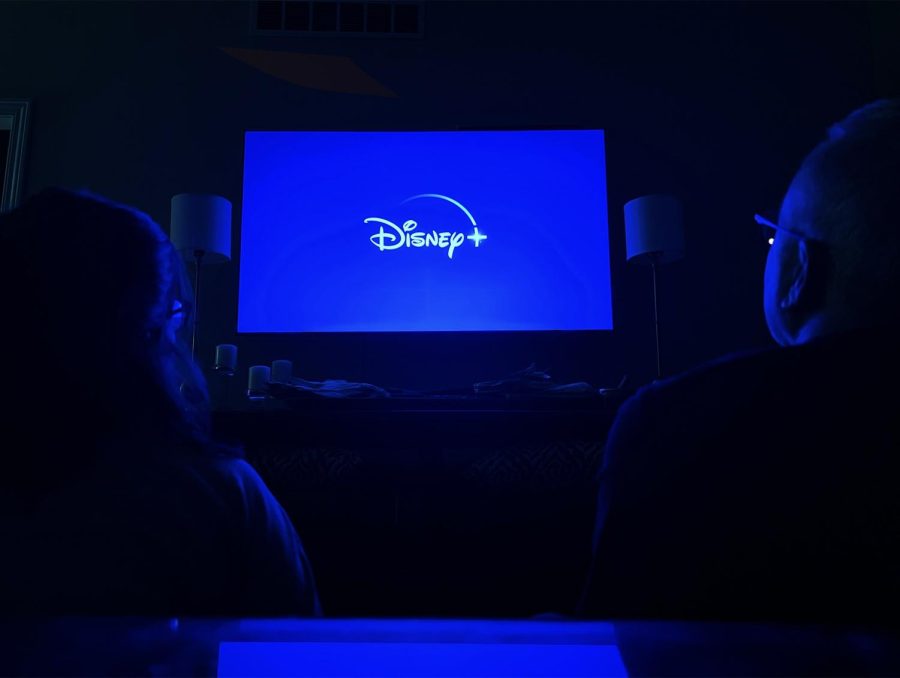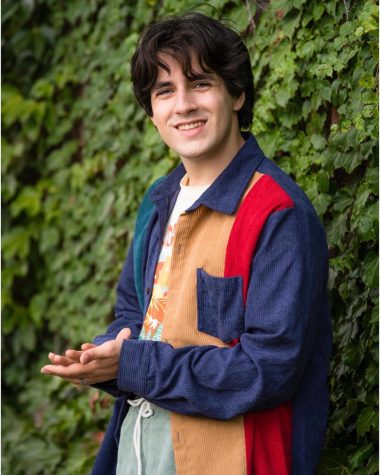Major contributions made by Lydia Wilson
Saturday morning cartoons like “Regular Show” and “Adventure Time” are cornerstones of childhood. Animation is a staple of modern youth, and any kid can explain that much.
What can’t be explained though, is why animation is abandoned on the journey into adulthood.
As American kids mature and form close social connections, animation is laid to the wayside. For many, shows they once loved grow into embarrassing side stories of their youth. Animation, as a medium, is simply seen as childish.
At its core, animation is a means of communicating art through interconnected images. From flipbooks of the late 19th-century to the AI-generated digital art of today, it relies upon the same principles. Each picture follows in sequential order to tell a broader story. Often, these stories are told with 24 images per second, allowing for smooth movement between frames. However, each of these 24 frames don’t draw themselves, and animation has remained a time-consuming process.
This begs the question; with such an involved process behind an infinitely-expressive medium, why is animation saved for the youth? Senior Lydia Wilson is an avid fan of animation, and has thoughts about its stigma. “When people think of animation, their minds go to old Disney movies like “Snow White” or “Beauty and the Beast”. These are great movies and strikingly beautiful, but they were made for kids. In the world we live in today, people don’t usually think of movies with wider appeal, like “Spider-Man: Into the Spider-Verse” or even cartoons, like “The Owl House”. While, yes, these are technically made for and often produced and marketed towards kids, they hide deeper meanings,” Wilson explains.
While animation in the West has been subject to intense stigmatization, it’s seen as a thriving medium across the Pacific. Anime, Japanese animation prominently featuring serialized stories and character depth, has spread from a niche subculture of storytelling to a global phenomenon.
Eastern Asia’s talent for visual storytelling is best represented by the powerhouse of South Korean animation. While anime and Eastern animation is wildly popular around the globe, Western animation is traditionally produced by the East. The vast majority of American networks outsource frame-by-frame animation to South Korean companies like Rough Draft Studios and Sunmin Image Pictures, which animate household favorites like “Futurama” and “Spongebob Squarepants”.
Back in the West, though, few shows stick out as examples of powerful animation. Programs like “Family Guy” and “Big Mouth” have seen soaring popularity among mature audiences for their explorations of traditionally taboo experiences, like dysfunctional family dynamics and puberty, but, while these shows undoubtedly have merit in the animation industry, they still don’t live up to the grand story arcs of impactful anime, like the films of Studio Ghibli, and live-action reality television.
Some Western animation has been able to achieve similar feats as the aforementioned Japanese animated projects. Standing out as one of the most impactful animated films ever released is Sony Animation’s 2018 home-run, “Spiderman: Into the Spider-Verse”.
The film not only leveraged its comic book origins to win a Golden Globe and Academy Award for best animated feature film, but also redefined who superhero movies were for. With a passing glance at Marvel’s catalog in the mid-2010s, it’s evident that superhero movies almost exclusively featured white leads. “Spiderman: Into the Spider-Verse”, though, gave a unique animated twist to the story of the first Black Spiderman. “[Spiderman: Into the Spider-Verse] tackles the age-transcendent issue of self-doubt, but also has a voice in the world of race and representation of color,” Wilson discusses.
Still, despite the film’s wild success and universal messages, reviews touted it as nothing more than a kids’ movie. Animation, it seems, will always be seen as a childish medium.
Among storytellers, however, some choose to leverage this expectation of animation to craft stories that appeal to all audiences. Shows like “The Owl House,” “Infinity Train” and “Gravity Falls” have all popped up on networks that target early teens and children. Each show tells a narrative with mature themes like trauma, grief and neurodivergency.
“The Owl House ”, created by Dana Terrace, became an instant classic when it premiered on Disney+ in 2020. Since then though, it’s seen censorship and cancellation, causing an abrupt ending to the series. The show will air its third and final season next year, despite such rave reviews. “[The Owl House] was canceled during the production of season two because of the negative international reception to its queer messaging. However, after the newest 45-minute special on YouTube, Disney seems to be regretting their decision. The new season has been a massive success, and I think Disney is missing out on major profit,” Wilson commented.
“The Owl House” is extremely popular among both children and adults alike. It stands out as one of Disney’s largest commercial successes in episodic animation. Why, then, has it been canceled? Disney CEO Bob Chapek weighs in on the company’s reasoning behind such a controversial decision. “Our fans and audiences put their kids to bed at night after watching Pinocchio, Dumbo, or Little Mermaid, then they’re probably not going to tune in to another animated movie, they want something for them,” Chapek explained.
While the kids are awake, though, parents should still be able to enjoy the content their kids consume. This idea drove director Joe Brumm to create “Bluey” in 2018, a kids’ show that discounts the idea that parents can’t enjoy their kids’ favorite shows. “Bluey is literally made for kids. It’s on Disney Jr. and is made to teach children lessons, but, as someone who has sat down and watched it, it’s so much more. It teaches not just kids, but adults too. It teaches parents how to open their imagination and to play along with the kids. It teaches parents how to stay calm and move on with life. It shows what a healthy family is, even on hard days. It gives insight to how kids see the world. This show has literally brought me to tears,” Wilson says.
It seems like animation has a bleak future in the West. Even animation juggernauts like Cartoon Network have already fallen from grace. Most of their library was pulled from streaming when Discovery merged with Warner Bros., one of the most powerful titans left in the industry. However, this expressive form of storytelling has demand and talent behind it, as shown by the popularity and execution of successful shows like “The Owl House” and “Bluey”. Animation can be for everyone, but everyone must show up to defend it faltering prominence in the field of visual storytelling.









